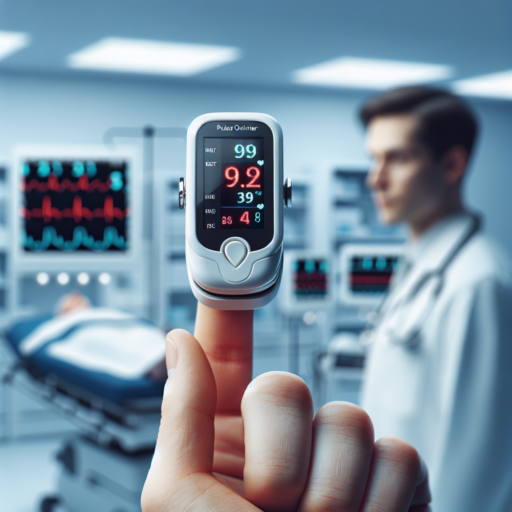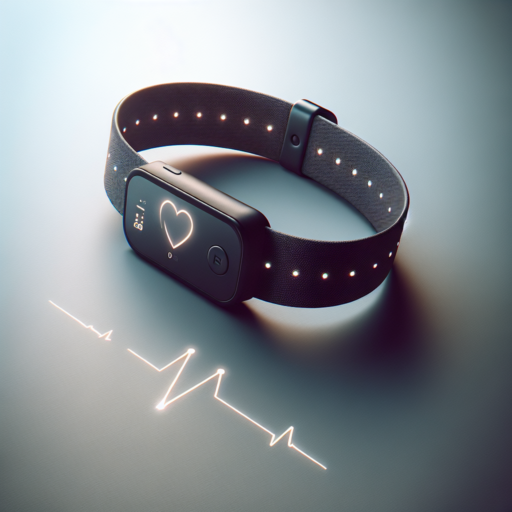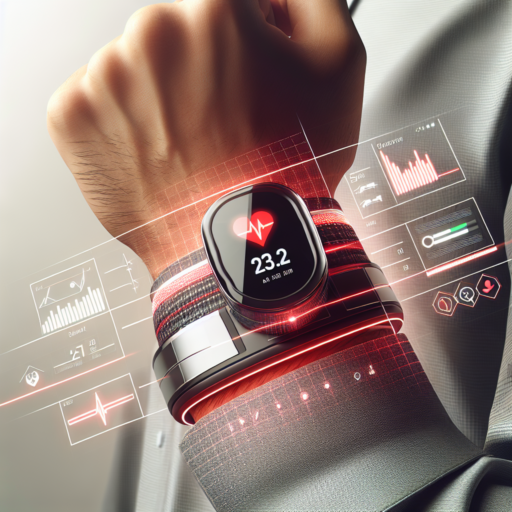Introduction to Pulse Oximeter Heart Rate Accuracy
The world of healthcare technology has always been on the forefront of advancing patient care and the utilization of pulse oximeters is no exception. A pulse oximeter is a non-invasive medical device that measures the saturation of oxygen in a person’s blood and provides insights into their heart rate with remarkable precision. However, the question of heart rate accuracy in pulse oximeters often surfaces among users and healthcare professionals alike.
Understanding the technology behind pulse oximeters is essential to appreciating their accuracy levels. These devices use light emitters and sensors to detect the absorbance of oxygenated and deoxygenated blood. This method, while highly effective, can sometimes be influenced by external factors such as poor circulation, skin thickness, and movement. Despite these potential variances, pulse oximeters are generally known for their reliability in providing heart rate readings.
The accuracy of pulse oximeters, especially in measuring heart rate, is crucial in various clinical and non-clinical settings. For individuals monitoring conditions like chronic obstructive pulmonary disease (COPD) or heart conditions at home, or athletes keen on understanding their fitness levels, getting precise heart rate measurements is of paramount importance. It’s this reliance on pulse oximeters that heightens the importance of ensuring the device’s accuracy. Manufacturers and researchers continually strive to improve the technology, aiming to minimize the margin of error and enhance user trust.
No se han encontrado productos.
How Do Pulse Oximeters Measure Heart Rate?
Pulse oximeters are non-invasive medical devices that play a crucial role in monitoring an individual’s oxygen saturation and heart rate. But how exactly do these compact and often portable devices measure something as vital and dynamic as heart rate? It comes down to a sophisticated yet beautifully simple principle of light absorption.
At the core of a pulse oximeter’s functionality is its ability to emit light from light-emitting diodes (LEDs). Two wavelengths of light, usually red and infrared, are passed through a body part, typically a fingertip or an earlobe. Hemoglobin, the protein in blood that carries oxygen, absorbs light differently depending on its oxygenation level. As blood pumps through your body with each heartbeat, the amount of absorbed light in these wavelengths changes. Pulse oximeters measure these changes in absorption, which occurs with each heartbeat, to calculate the heart rate.
The device uses a sensor to detect the amount of light that passes through the finger and reaches the photodetector on the opposite side. The fluctuating signals received by the photodetector, owing to the pulsing blood, are analyzed to determine the heart rate. This process is quick, typically providing a reading within seconds, making pulse oximeters exceptionally valuable in both clinical settings and home healthcare for the monitoring of heart rate and oxygen saturation levels.
The Science Behind Pulse Oximetry and Heart Rate Detection
Pulse oximetry and heart rate detection are pivotal technologies in modern medicine, offering non-invasive methods to monitor an individual’s oxygen saturation and pulse rate. This science is rooted in the principles of spectrophotometry and the physiological process of blood circulation, rendering it a cornerstone in the assessment of respiratory and cardiac functions.
Understanding Photoplethysmography
Pulse oximeters operate on a simple yet profound optical principle known as photoplethysmography (PPG). This technique involves the use of light sources, typically LEDs, that emit wavelengths of light absorbed by the blood. By measuring changes in light absorption during the pulse, pulse oximeters can calculate blood oxygen levels (SpO2) and heart rates. The variation in light absorption occurs due to the pulsatile nature of arterial blood flow, which reflects the heartbeat.
Role of Hemoglobin in Oxygen Level Detection
Hemoglobin, the oxygen-carrying component of blood, plays a crucial role in oxygen level detection. Pulse oximetry capitalizes on the differences in the absorption spectra of oxyhemoglobin and deoxyhemoglobin. When exposed to light, oxyhemoglobin and deoxyhemoglobin absorb different amounts and wavelengths of light. By analyzing these differential absorptions using advanced algorithms, the device provides a quantitative measure of the oxygen saturation in the blood.
The accuracy of pulse oximetry and heart rate detection has made these devices indispensable in various settings, ranging from critical care units to fitness trackers. Through the interplay of technology and physiology, they continue to provide vital health metrics with ease and precision.
Factors Influencing the Accuracy of Pulse Oximeter Heart Rate Readings
Pulse oximeters have become indispensable tools in monitoring heart rate and oxygen saturation, particularly in the clinical setting. However, the accuracy of pulse oximeter readings can be influenced by various factors that are crucial for both healthcare professionals and patients to understand.
Peripheral Circulation
One critical factor affecting pulse oximeter accuracy is the state of peripheral circulation. Poor circulation, often resulting from medical conditions such as peripheral arterial disease or hypothermia, can lead to weaker pulse signals. This, in turn, may cause the pulse oximeter to generate less reliable heart rate readings. Activities that enhance blood flow, like warming the extremity or ensuring proper positioning, can help improve the accuracy of readings.
Skin Pigmentation
Another significant factor to consider is skin pigmentation. Studies have shown that pulse oximeters might perform differently on light or dark skin due to variations in light absorption, which can affect the device’s ability to accurately measure heart rate. Manufacturers are continually seeking ways to mitigate these discrepancies and enhance device sensitivity across diverse populations.
Movement and Sensor Placement
Movement is a well-known aspect that can impact pulse oximeter readings. Excessive movement, such as shaking or trembling of the hand, can interfere with the sensor’s ability to accurately detect the pulse, leading to fluctuating or incorrect heart rate readings. Proper sensor placement is paramount in minimizing errors induced by movement. Ensuring that the pulse oximeter is securely fastened and placed on the recommended measurement site, typically the fingertip or earlobe, can significantly enhance the accuracy of the readings.
Understanding these factors can greatly aid in achieving the most accurate heart rate readings from pulse oximeters, guiding better clinical decisions and patient care.
Comparing Pulse Oximeter Heart Rate Accuracy with Other Devices
Measuring heart rate accuracy is crucial for understanding cardiovascular health, and various devices are used for this purpose. Among these, pulse oximeters have gained popularity for their dual function of measuring both heart rate and blood oxygen levels. However, how do these devices compare to other methods in terms of heart rate accuracy?
Traditionally, electrocardiographs (ECGs) have been the gold standard for measuring heart rate due to their precision and the comprehensive data they provide. ECGs measure the electrical activity of the heart, which is directly correlated with the heart’s beating action. Pulse oximeters, on the other hand, estimate heart rate by detecting blood volume changes in the finger or earlobe, which may not always match the accuracy of ECGs, especially in conditions of low perfusion or during movement.
Another common device for measuring heart rate is the chest strap monitor, which, like ECGs, measures electrical signals. These devices are favored for continuous heart rate monitoring during exercise, providing a level of accuracy close to that of ECGs. When compared to pulse oximeters, chest straps offer more consistent readings under physical activity but lack the convenience and non-invasiveness of a simple clip-on device.
Wrist-worn fitness trackers are also popular for heart rate monitoring and provide the advantage of continuous, passive measurement. Although convenient, these trackers can vary widely in accuracy, with some models nearing the precision of chest straps and others falling short, especially during intense exercise. The accuracy of these devices compared to pulse oximeters depends significantly on the technology used and the conditions of use, such as how tight the device is worn and the type of exercise being performed.
Understanding the Limitations of Pulse Oximeter for Heart Rate Monitoring
While pulse oximeters are widely recognized for their ability to provide quick and non-invasive readings of blood oxygen saturation (SpO2), relying on them solely for heart rate monitoring presents several limitations. It’s essential for users to grasp these constraints to have realistic expectations and understand the situations where alternative or supporting technologies might be necessary.
Accuracy Variances
Pulse oximeters measure the heart rate by detecting blood volume changes in the microvascular bed of tissue. However, this method can lead to variances in accuracy, especially when compared with more direct heart rate measurements such as those from an electrocardiogram (ECG). Factors such as poor circulation, skin thickness, and movement can significantly impact the readings, potentially yielding less reliable heart rate data.
Delayed Response to Rapid Heart Rate Changes
Another notable limitation is the delayed response of pulse oximeters to sudden changes in heart rate. During intense physical activity or in cases of arrhythmia, the heart rate can fluctuate rapidly. Pulse oximeters might not instantly reflect these changes due to the manner in which they sample the blood’s flow, introducing a lag time that can be critical for individuals relying on precise, real-time data for medical or fitness decisions.
Understanding these limitations is crucial for anyone considering a pulse oximeter for heart rate monitoring. While they offer significant benefits, including convenience and the ability to measure blood oxygen levels alongside heart rate, recognizing when and where their use is most effective can help ensure more accurate and reliable monitoring of one’s cardiovascular health.
Improving Accuracy: Tips for Using Your Pulse Oximeter Correctly
Ensuring you’re getting accurate readings from your pulse oximeter involves more than just clipping it on your finger. The device, crucial for monitoring the saturation of oxygen in the bloodstream, requires proper handling and understanding for it to deliver reliable data. Key factors such as the placement on the finger, body movement, and external light interference can significantly impact its accuracy.
Correct Finger Placement Is Essential
The accuracy of your pulse oximeter starts with how you place it on your finger. It is recommended to use the device on your middle or ring finger, as these locations tend to provide more reliable readings. Before attaching the pulse oximeter, ensure your hand is warm, relaxed, and below your heart level. Cold fingers or improper placement can lead to inaccurate readings, misguiding your understanding of your oxygen saturation levels.
Minimize Movement During Measurement
A common mistake many users make is moving excessively while taking a reading. This movement can cause the pulse oximeter to misinterpret your blood flow, leading to inaccurate results. It’s important to stay still and calm throughout the measurement process. Taking deep, steady breaths can help stabilize your readings and enhance the device’s accuracy. Ensuring minimal movement not only helps in accurate data collection but also in reliable monitoring over time.
Case Studies: Real-Life Examples of Pulse Oximeter Heart Rate Accuracy
Pulse oximeters, small yet powerful devices, have become essential in both clinical settings and personal health monitoring. They offer a non-invasive peek into our body’s oxygen saturation (SpO2) levels and heart rate with a simple clip on the finger. But how accurate are these readings when it comes to monitoring heart rate? Delving into real-life case studies reveals the efficiency and occasional limitations of these handy gadgets.
Understanding Pulse Oximeter Heart Rate Readings
In a comprehensive study conducted at a renowned health institution, researchers found that pulse oximeters provided heart rate readings with a minimal margin of error when compared to electrocardiographs (ECGs), the gold standard in heart rate monitoring. Participants in various health states, from resting to post-exercise, were monitored using both devices. The findings highlighted that pulse oximeters could accurately reflect heart rate changes in real-time, proving their reliability for heart rate monitoring in diverse conditions.
The Impact of External Factors on Precision
While pulse oximeters are praised for their accuracy, external factors such as poor circulation, skin pigment, nail polish, or even ambient light can impact the precision of the readings. A case study focusing on patients with chronic heart conditions illustrated the sensitivity of pulse oximeters to these external variables. Despite these challenges, when used in optimal conditions, the devices showed a high degree of accuracy, underscoring the importance of correct usage for dependable heart rate data.
Exploring these real-life examples sheds light on the pulse oximeter’s role in heart rate monitoring, establishing it as a valuable tool for both healthcare professionals and individuals. Understanding its operational parameters and limitations helps users harness the device’s full potential for accurate heart rate tracking.
Frequently Asked Questions on Pulse Oximeter Heart Rate Accuracy
Many individuals rely on pulse oximeters for monitoring their heart rate and oxygen saturation levels, whether for sports training, managing health conditions, or assessing their wellness. This leads to a plethora of questions regarding the accuracy of these compact yet potent devices. Highlighted below are some of the common inquiries users have about the precision of pulse oximeter heart rate readings.
What Factors Can Affect Pulse Oximeter Heart Rate Accuracy?
Various elements can influence the accuracy of heart rate readings obtained from a pulse oximeter. Variables such as improper sensor placement, motion artifacts, and ambient light interference are notable factors. Additionally, physiological conditions such as thick or poorly perfused skin, and the presence of nail polish or false fingernails, can also impact the device’s accuracy. It’s crucial for users to follow manufacturer guidelines for use to minimize these discrepancies.
How Accurate Are Pulse Oximeters in Measuring Heart Rate?
Pulse oximeters are generally accurate for measuring heart rate, with most devices capable of providing readings within a close range to actual heart rates measured through more invasive methods. Studies suggest that when used correctly, pulse oximeters have a variance of ±2 to ±4 beats per minute compared to electrocardiogram (ECG) readings, which are considered the gold standard in heart rate monitoring. This level of accuracy is deemed acceptable for most clinical and fitness monitoring purposes.
Can Reliability of Pulse Oximetry for Heart Rate be Improved?
Improving the reliability of pulse oximetry readings for heart rate involves ensuring optimal conditions for measurement. Users can enhance accuracy by warming their hands if cold, remaining still during measurement, and ensuring the device is properly positioned on the finger, earlobe, or toe, depending on the design of the pulse oximeter. Regular calibration, if applicable, and choosing devices validated by clinical studies can also contribute to more reliable readings.
Future of Pulse Oximetry: Innovations and Advances in Heart Rate Monitoring
The landscape of heart rate monitoring has been radically changed by pulse oximetry, a non-invasive technology that has made significant strides over the years. As we look into the future, innovations and technological advancements are poised to enhance the capabilities of pulse oximeters even further. These developments aim to improve the accuracy, portability, and user-friendliness of these devices, making heart rate and oxygen saturation monitoring more accessible and efficient for both healthcare professionals and patients.
One of the key areas of innovation in the realm of pulse oximetry is the integration of advanced algorithms and machine learning. These technologies are expected to refine the process by which pulse oximeters analyze data, reducing the incidence of false readings and improving the precision in diverse patient populations including those with low perfusion or undergoing motion artifacts. This leap in accuracy is crucial for critical care scenarios, where real-time and reliable data can be the difference between life and death.
Furthermore, as wearable technology continues to evolve, the future of pulse oximetry is likely to see a shift towards even more compact and comfortable designs. Innovations in materials and sensor technology are paving the way for ultra-thin, flexible oximeters that can be easily worn for extended periods without discomfort. These advancements not only promise to improve patient compliance but also open the door to continuous, real-time monitoring outside the clinical setting, offering a new paradigm in the management of chronic conditions and overall wellness.




